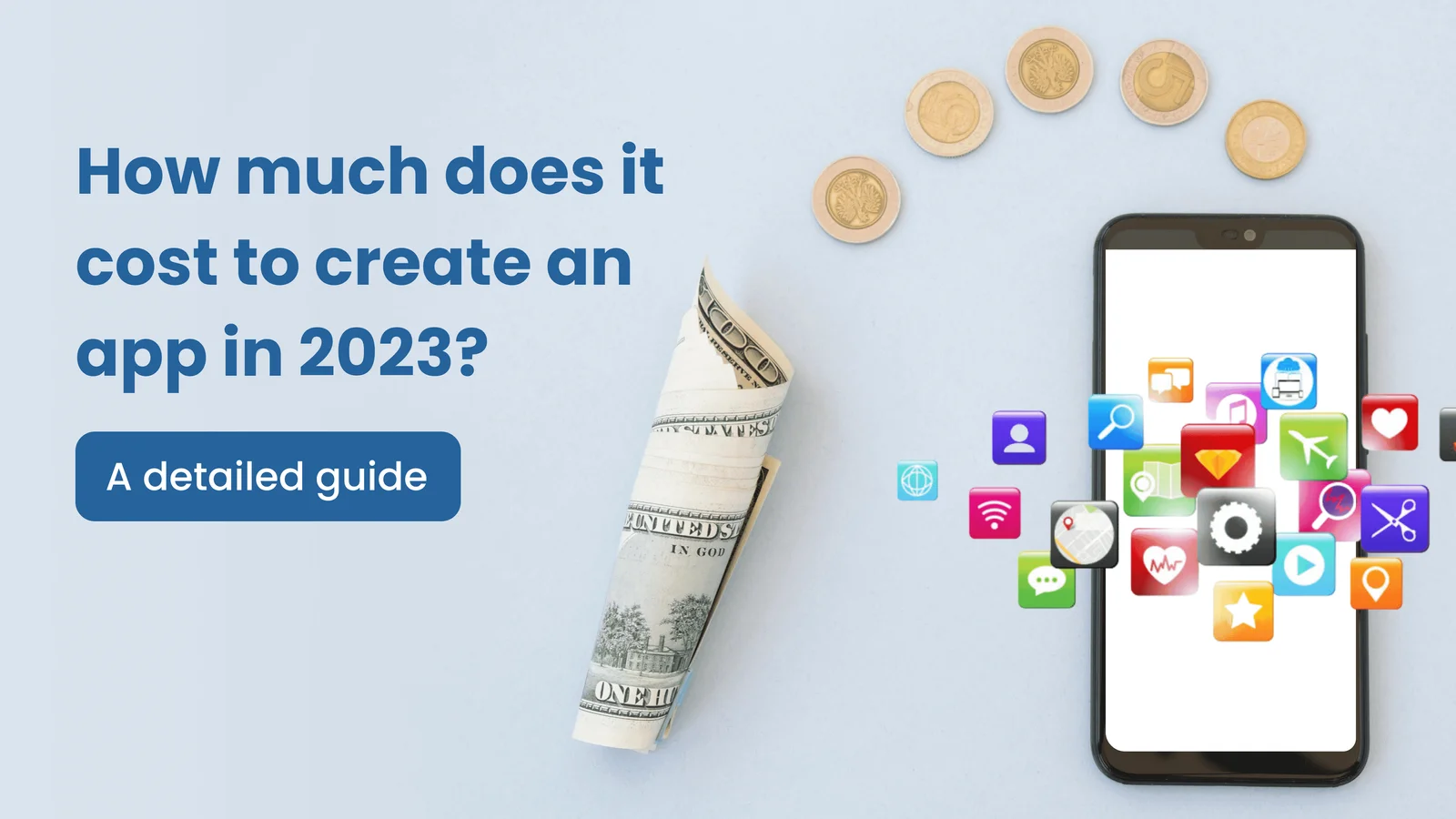Today, 90% of our population uses mobile phones. The need for mobile apps is increasing. Even we depend on these mobile apps for our various common tasks like reminder messages, note-making, food ordering, etc.
As per Statista, the number of mobile apps on the Google Play Store was 2.59 million from December 2009 to June 2023.
With this increasing number, you can estimate how big this market is. For digital businesses, apps can be helpful for increasing revenue.
In this blog, we will provide you with complete details of the cost, time estimate, and prerequisites that you must be aware of before starting mobile app development. In this guide, we will provide a cost estimate as per our expenses.
Initial Research Before Start of Mobile App Development
First, you need to do research on your main requirements and the features required for the app. Then, you can check your competitors’ businesses, which already have mobile apps. You can get a clear idea of what is working from that app working. You can find missing features in already-existing apps and add them to your mobile app.
Mobile App Development Cost: What to Expect
If you’re thinking about a simple app with just a few features, it might cost you around $500 to $10,000. These are usually basic apps for simple tasks or giving information.
But if you want a really fancy app, like a game or something for a big company, it could cost up to $20,000. These kinds of apps require more time, effort, and special skills to create.
To figure out how much it actually costs to make an app, you need to think about a few things. The total cost can be different based on how complex your app is, what it can do, and if it’s for iPhones, Androids, or both.
The Common Apps with Development Costs Under $1000
1. To-Do List App: A to-do list app is another popular app that can be developed for under $1000. This type of app is also relatively simple and does not require many features.
2. Flashcard App: A flashcard app is a great way to learn new information. This type of app can be developed for under $1000 and customized to the user’s needs.
3. Trivia App: A trivia app is a fun and educational way to pass the time. This type of app can be developed for under $1000 and customized to include a variety of trivia questions.
4. Recipe App: A recipe app is a great way to find and save recipes. This type of app can be developed for under $1000 and customized to include a variety of features, such as the ability to search for recipes, save recipes, and create shopping lists.
5. Calculator App: A simple calculator app can be developed for under $1000. This type of app does not require any complex features or functionality.
These are just a few examples of popular apps that can be developed for under $1000. The actual cost of developing an app will vary depending on the specific features and functionality that you want to include. However, these apps can be a great way to get started in app development without having to spend a lot of money.
Other Popular and Complex Apps Cost Estimates
Here are some popular apps that have changed how we use our phones and are at the top of the app world. We’ve also included the average cost to create these apps.
1. Uber-like App: Uber changed how we travel. To make an app like Uber for rides and GPS tracking, it might cost around $6,000 to $8,000.
2. Snapchat-like App: Snapchat is a fun app with filters and disappearing photos. Creating a similar app could cost about $9,000 to $10,000.
3. WhatsApp-like App: WhatsApp is a popular messaging app with chat, voice calls, and video calls. Building a similar app might require around $9,000 to $12,000.
4. TikTok-like App: TikTok is a video app where you can lip-sync and use cool filters. If you want to make an app like TikTok, it could cost you about $15,000 to $20,000.
5. Netflix-like App: Netflix is a top streaming service. Developing a video streaming app like Netflix with user profiles and lots of content might cost between $10,000 and $20,000.
Here is a table of the most popular global apps and their estimated development costs:
Sure, here’s a simplified chart with basic features, functionalities, and estimated price ranges for popular apps:
Please note that these are rough estimates and can vary significantly based on specific app requirements, complexity, and development resources. Costs may also change over time due to market dynamics and technological advancements.
Other Factors Affecting the Cost of Mobile App Development
Mobile App Complexity: Apps can be simple or complex. A simple app can be developed for $500 and based on complexity, it can vary up to $20,000 and time can vary from 1 month to 1 year.
Functionality Requirements: For every app, we recommend creating an MVP first. It can save you time and money. Then you can decide to add new features and continue development.
Cost Based on App Category
There are various categories of apps. Prices can be different for different categories. Here we will show some of the most popular categories and their estimates.
1. E-commerce Apps
E-commerce apps are online shops where you can buy things. They cost more to make because they have lots of features and need to keep your information safe.
2. Social Networking Apps
Social networking apps help you connect with friends and share photos and messages. They are expensive to build because they work with your phone’s camera and need to handle lots of people using them at the same time.
3. On-Demand Apps
On-demand apps make it easy to get things like rides or food delivered. They’re not as simple as they seem because they have three versions: one for you, one for the people providing the service, and one for the businesses. They use things like maps and schedules and need to keep your payments safe.
Cost Ideas for Different Mobile App Development Platforms
Android & iOS: Native app development platforms for Android and iOS utilize programming languages like Swift and Objective-C for iOS and Java or Kotlin for Android.
Cross-Platform (Flutter/React Native): The trend of developing apps for both iOS and Android simultaneously is cost-effective. Key players in this space are Flutter and React Native, which offer code reusability and reduced development effort.
App Maintenance Cost
After development, there is the maintenance cost for apps. Maintenance for large-scale apps can be higher and it can be within budget for small-scale apps.
Smart Ways to Spend Less on Making an App
Building an app can be expensive, but there are ways to save money without making it less good. In this guide, we’ll tell you how to make your app without spending too much.
1. Plan Clearly: Before you start, write down what your app will do and how it will look. This helps you avoid making big changes that cost money later.
2. Choose the Right Type: Decide if you want to make an app just for one kind of phone (like iPhone or Android) or one that works on many types. Making one for many can be cheaper because you can use the same stuff for all.
3. Do It Yourself or Get Help: Think about whether you can make the app yourself or if it’s better to ask a good app company to help. Sometimes, it’s faster and cheaper to let experts do it.
4. Pick the Most Important Stuff: Find the most important things your app needs to have when it first comes out. Start with those and add more later, when you have more money.
5. Work in Small Steps: Instead of doing everything at once, work on your app bit by bit. This helps you change things if needed and doesn’t use up all your money at once.
6. Free Tools: Use free tools and things other people made to help you make your app. Some of them are really good and won’t cost you much.
7. Test a Lot: Try out your app a bunch of times to see if it works right. This saves you from fixing big problems later, which can cost a lot.
8. Make It Easy to Use: Design your app so it’s easy for people to understand and use. This keeps users happy and saves you from changing things later.
9. Watch Your App Closely: Keep an eye on how your app is doing and how much you’re spending. This helps you make changes when needed and not spend too much.
10. Plan for Later: Think about what you’ll do after your app is done. You’ll need to keep it working and maybe add new things. Plan for this so it doesn’t cost a lot later on.
By following these simple steps, you can make your app without spending too much money and still have a good app in the end.
Save Money on Your App with Boffin Coders
Boffin helps you plan your app without spending too much. We give you free advice on what you need. Our team makes sure your app costs are fair and not too high. We will guide you through the process and make it easy. Start today and save money on your app. Hire On-demand App developers to bring your vision to life!





